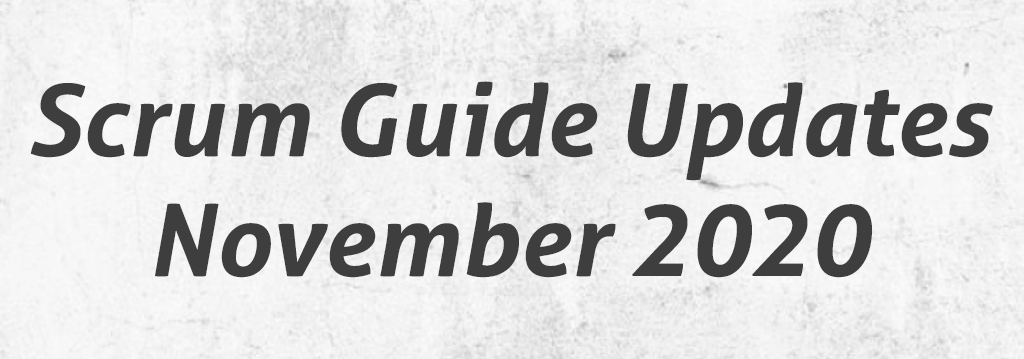
Category : Scrum
By Vineet Patni | 15 January 2021
Changes are a part of life and can get as complex as possible. However, some changes can make life much easier and simpler. The Scrum Guide changes of November 2020 are a strong example of the latter.
First, Scrum as a framework hasn’t changed and still is a fundamental approach to solving complex problems. Scrum has evolved into an industry-agnostic framework in more than a quarter century of its presence across industries.
The Scrum Guide is more straightforward and less prescriptive. The latest Scrum Guide saw a few updates we must understand and how they could influence the organization and its Scrum teams. Here is my summary of the Scrum Guide updates for November 2020.
- Less prescriptive:
Living the Agile Principle of “Simplicity,” being Agile is about doing less and achieving more. It primarily deals with reducing wastages, removing redundancy, having less rigidity, and working in an optimized scenario. Simply put, it is about being minimalistic in our approach. With only 13 pages, the guide is in its most concise and crisp format. For example, the three questions format of Daily Scrum has been rendered obsolete.
- One Team, One Product:
There are no more teams within a Scrum team, and there is no mention of the development team anymore. All those working on the Increment within the Scrum Team are either Developers, the Product Owner, or the Scrum Master. With one “cohesive team” working on one product, the objective is clear and the same for all, and they work as one unit, having clear accountabilities as they work on the sprint increment.
- Product Goal:
With the Product Goal’s introduction, the scrum team lives by its value of “focus.” The bigger picture of the product goal enables the scrum team to have a “larger, strategic” objective while working on each Sprint to deliver increments. Each Increment is a piece in the giant jigsaw puzzle: the Product Goal.
- Sprint Goal, Definition of Done, and Product goal:
The “Commitments” on the Scrum Artifacts. Product Goal provides a better identity to the Sprint goal and Definition of Done. There is more clarity around these artifacts’ focus, commitment, and way to measure progress. The Product Backlog contains the Product Goal, Sprint Backlog contains the Sprint Goal, and the Increment has the Definition of Done.
- Self-Managed Teams:
An earlier update of 2017 saw that the teams were self-organized. In the 2020 version, the Scrum Teams are self-managing. Self-management is the minimal form of Self-organization. Self-managed teams take a call on who does what, when, and how and work together to provide Increment.
- Sprint Planning:
Three topics of extreme importance are a part of Sprint Planning – The Why, the What, and the How. The most essential ‘Why’ the Scrum Team is coming together for the Sprint. This ‘Why’ provides more clarity on determining the Sprint Goal. The ‘Why’ in Sprint planning offers a purpose and direction to the team for the Sprint.
- Simplification of Language:
Simplification is a step towards reducing the complexity in the environment of the scrum team and its work. The latest updates are easy to understand and can experience wider acceptability with the reduced complex statements and removal of references to the IT industry. Reduced IT references enable teams across industries to relate to Scrum better.
The Scrum Guide 2020 is leaner, emphasizing Scrum Values and having an essence of Agile principles. The Scrum Guide has now become “lesser but stronger.”
About The Author:
Vineet Patni is the Founder and Principal Agile Coach at ScaleUp. An avid learner and a passionate facilitator, Vineet has been assisting enterprises and individuals in becoming truly Agile. Please feel free to connect with him at Vineet@ScaleUpConsultants.com .
Disclaimer: The opinions expressed in this post are the author’s own. The author welcomes and respects any difference of opinion.


Leave a Reply